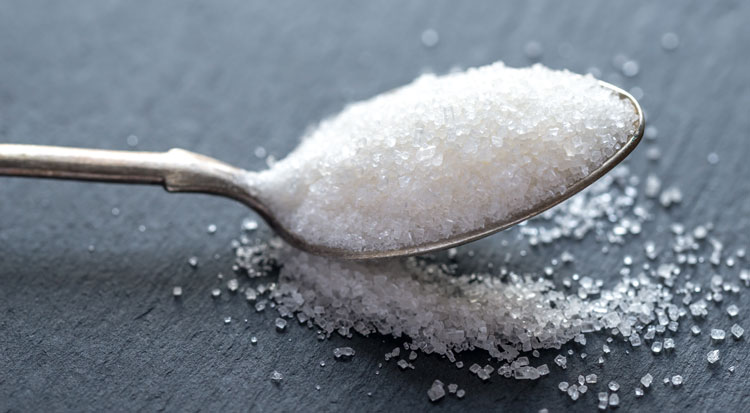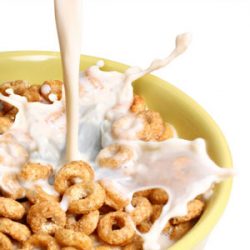Sugar reformulation: sweet but not so simple
- Like
- Digg
- Del
- Tumblr
- VKontakte
- Buffer
- Love This
- Odnoklassniki
- Meneame
- Blogger
- Amazon
- Yahoo Mail
- Gmail
- AOL
- Newsvine
- HackerNews
- Evernote
- MySpace
- Mail.ru
- Viadeo
- Line
- Comments
- Yummly
- SMS
- Viber
- Telegram
- Subscribe
- Skype
- Facebook Messenger
- Kakao
- LiveJournal
- Yammer
- Edgar
- Fintel
- Mix
- Instapaper
- Copy Link
Posted: 29 April 2020 | Julian M Cooper | No comments yet
Sugar expert, Julian M Cooper, discusses the challenges that sugar reformulation presents to new developers, and outlines examples of attempts made on different products.


According to some experts we are consuming too much sugar. In 20151 the UK’s Scientific Advisory Committee on Nutrition (SACN) recommended that ‘free sugars’ intake should not exceed five percent of energy intake. This equates to no more than 30g/day for 11+ individuals. To put this into perspective, the sugar ration at the end of World War II2 was 8oz (227g) per week for adults, equal to 32g/day.
Building on the SACN report in 2016, Public Health England (PHE) published its Childhood Obesity – A Plan for Action3 report, in which reformulation (to reduce/replace sugar) was proposed as a key factor. The aim was to reduce sugar(sic) by 20 percent by 2020 in nine targeted categories (breakfast cereals, yogurts, biscuits, cakes, confectionery, pastries, puddings and spreads).
In addition, the Soft Drinks Industry Levy (SDL)4 was introduced in 2018; this is a levy on producers and importers to encourage them to reduce sugar in their products to mitigate the impact of the levy.
Sugar and sugars
Sugars are not only sweet, they also deliver varied properties that are required in different food products. They provide texture, mouthfeel, bulk, colour, flavour, humectancy and preservative capability. They also interact with other ingredients during processing to provide additional desirable properties such as colour and flavour in cooking and baking.
When most people refer to sugar, they usually mean white granulated sugar, the sort they find in their kitchen cupboards at home. However, it is important to note that on food labels the term ‘carbohydrates – of which sugars’ not only includes granulated sugar – ie, sucrose – but all mono and disaccharides in the product, sometimes referred to as ‘total sugars’.
The most common sugars in foods are glucose, fructose and galactose (monosaccharides) and sucrose, maltose and lactose (disaccharides). The SACN report recommended that the definition for ‘free sugars’ be adopted in the UK. Free sugars include all mono and disaccharides added to foods by the manufacturer, cook or consumer, plus sugars naturally present in honey, syrups and unsweetened fruit juices. Under this definition, lactose when naturally present in milk and milk products is excluded. This distinction between intrinsic (present naturally in foods – eg, fruits and vegetables) and extrinsic (added or free) tends to be an arbitrary one and cannot be measured analytically. Legally, the term ‘sugar’ is a reserved description under the Specified Sugars Regulations (England)6 and should only be used when referring to white granulated sucrose. This leads to a lot of confusion, even among experts, and many labels do not conform to the correct usage of terms. In nutritional labelling it should always be sugars. The IFST Information Statement on Sugars7 provides comprehensive information on the different terminology used in relation to sugars.
The challenges of reformulation
There is a range of ingredients (replacers) that can be used in foods and drinks to replicate the many functions of sugars. Typically, they only replace one function of the sugars, sometimes two, but there is no unique ingredient that can replicate all the functions of sugars in all products. The types of ingredients that can be used as sugar replacers are high potency sweeteners, polyols, bulking agents and fibres.
In some products, the reformulation challenge is relatively easy and has already been achieved. In beverages, the sweetness of the sugars can be replaced readily with high potency sweeteners, which can be used in smaller quantities, while the bulk of the sugars is replaced by water, thus delivering a calorie reduction. In the UK, this type of reformulation has been underway for over 20 years. In 1994, the soft drinks regulations8 were revoked and beverages have been reformulated ever since. Many soft drinks in the UK were reformulated years before the SDL was introduced and several have received a minor tweak to drop them under the SDL minimum threshold (<5g sugars/100ml).
Other products, particularly those containing significant levels of starch and/or fat combined with sugars, are more challenging to reformulate.
The key issues encountered with reformulation are increased numbers of ingredients, increased warnings on pack, insignificant changes to the energy content of products and impacts on food safety. In addition, the product developer must ensure a similar taste to the original product and deliver it with little or no increase in price.
Consumers are demanding cleaner labels and wish to see ingredients that they recognise on labels. The use of several ingredients to replicate the multifunctional properties of sugars brings reformulation into conflict with consumer demands.
The use of many sugar replacers is controlled by the EU Additives Regulation 1129/2011.9 Two statements that must accompany the use of specific additives used to replace/reduce sugars are ‘contains a source of phenylalanine’ (for products containing aspartame) and ‘excessive consumption may cause laxation’ (for products containing above 10 percent polyols).
When consumers see a ‘reduced sugars’ claim on a product, they expect to see a resultant reduction in energy in the product. Research at Leatherhead Food Research10 has indicated that consumers see sugar(s) as a proxy for calories and expect a similar reduction in calories if a reduced sugars claim is made on pack. Under the health and nutrition claims regulations,11 to make a reduced sugars claim the amount of sugar in a product must be reduced by at least 30 percent when compared to a similar product and the claim can only be made if the amount of energy in the product bearing the claim is equal to or less than the amount of energy in a similar product.
The PHE Childhood Obesity plan also highlights that sugar reductions should be accompanied by reductions in calories and should not be compensated for by increases in saturated fat. In practice this is very difficult to achieve in many products, as illustrated in Table 1.
|
Product |
Energy cals/100g |
Reduction |
Sugars g/100g |
Reduction |
Price Increase |
|
Breakfast cereal original |
387 |
|
30 |
|
|
|
Breakfast cereal reformulated |
382 |
1% |
17 |
43% |
n/a |
|
Cake bars original |
411 |
|
38 |
|
|
|
Cake bars reformulated |
405 |
1% |
26 |
32% |
45%* |
|
Chocolate original |
534 |
|
56 |
|
|
|
Chocolate reformulated |
504 |
6% |
37 |
34% |
29%* |
Above: Table 1 – Impact of reformulation on calories and price – label and supermarket data Oct 2019. (Price normalised for the same weight)
Breakfast cereals are composed principally of starch from a number of cereal grains – wheat, corn, oats, rice etc – with sugars added to provide structure, taste and colour. Starch and sugars are carbohydrates and both have an energy content of 4 calories/g. Consequently, when sugars are reduced in cereal products, the starch increases in proportion and there is a negligible change in the energy content of breakfast cereals. (See Example 1, Table 1).


Breakfast cereals contain starch from a number of cereal grains with sugars added to provide structure, taste and colour
The reformulation of cakes and biscuits encounters the added complexity of the addition of fat – at nine calories per gram this is more than double the calories of sugars. If lower calorie ingredients, for example fibre, are not added, it is highly likely that the energy content will be higher in the reformulated product. This is certainly the case when sugars are gradually reduced in a stepwise fashion as advocated by PHE; the resultant products gradually increase in calories as the sugars are reduced and the fat becomes a higher percentage of the product. In Example 2, Table 1, fibres are added to deliver a miserly one percent reduction in energy content from a significant 32 percent reduction in sugars.
Chocolate brings its own challenges as it is mostly fat and sugars. In Table 1 there is an example of how a branded chocolate bar has been reformulated to deliver a significant reduction in sugars (34 percent) without the use of sweeteners and a reduction in energy of eight percent.
A major issue for all reformulated products is increased cost. Data presented in Table 1 show that the reformulated cake bars and chocolate are significantly more expensive than the original product – 45 percent and 29 percent respectively (when normalised to the same weight). The products are presented with a smaller portion and pack size and have a similar price point but for less product. Reformulation is an expensive activity and typically more expensive ingredients must be used.
Sugars are highly soluble and thus influence water activity in many systems. Problems can occur if sugars are reduced or replaced in food products; a well-documented outbreak of botulism in 1989 was associated with the replacement of sugar with aspartame in hazelnut puree products. Sugar was providing preservative benefits and preventing microbial growth during processing and storage; replacement with aspartame changed the aw and allowed the growth of Clostridium botulinum in the product. This resulted in one death and 27 people suffering from botulism poisoning.12
Conclusion
Sugars reformulation as a single factorial approach may not be the universal panacea for the obesity crisis and could lead to unintended consequences. It may not deliver a significant reduction in calories and care must be taken to avoid the ‘halo effect’ where reduced sugars products are perceived as ‘healthier’ and therefore over consumed. A paradigm shift in reformulation is needed where a holistic approach to product development should aim to deliver safe, lower calorie products where all ingredients deliver maximum impact at optimal levels.
About the author
Julian M Cooper is a sugars and carbohydrate expert with over 40 years’ experience in the food industry. He has extensive experience in process and product development including reformulation and research and development in the food sector. He is a visiting professor at the University of Reading and chairs the Scientific Committee at IFST where he is also a Board Trustee. In 2015 he retired from Associated British Foods (British Sugar) and is now an independent consultant to the food industry.
References:
- SACN Report: Carbohydrates & Health. Scientific Advisory Committee on Nutrition 2015 https://www.gov.uk/government/publications/sacn-carbohydrates-and-health-report
- WWII rations https://en.wikipedia.org/wiki/Rationing_in_the_United_Kingdom
- HM Government – Childhood Obesity A Plan for Action https://www.gov.uk/government/uploads/system/uploads/attachment_data/file/546588/Childhood_obesity_2016__2__acc.pdf
- Soft Drinks Industry Levy 2018 http://www.legislation.gov.uk/uksi/2018/41/contents/made
- Product Reformulation – can sugar be replaced in foods? M. Cooper International Sugar Journal 2012, Vol 114, 1365
- Statutory Instruments 2003 No 1563 Food England The Specified Sugar Products (England) Regulations 2003 http://www.legislation.gov.uk/uksi/2003/1563/pdfs/uksi_20031563_en.pdf
- Sugars Information Statement – IFST http://www.ifst.org/knowledge-centre/information-statements/sugars
- Soft Drinks Regulations 1964 https://www.legislation.gov.uk/uksi/1964/760/contents/made
- Additives Regulation 2011 https://eur-lex.europa.eu/legal-content/EN/ALL/?uri=CELEX%3A32011R1129
- Patterson NJ, Sadler MJ, Cooper JM. Consumer understanding of sugars claims on food and drink products. Nutrition Bulletin, 37, 121 – 130 (2012) https://www.ncbi.nlm.nih.gov/pmc/articles/PMC3437484/
- Health and Nutrition Claims Regulations https://eur-lex.europa.eu/legal-content/EN/TXT/PDF/?uri=CELEX:02006R1924-20141213&from=EN
- Botulism in the UK. Brett M Eurosurveillance, Vol 4 Issue 01 January 1989
Related topics
Related organisations
Associated British Foods, IFST, Leatherhead Food Research, Public Health England (PHE), University of Reading







